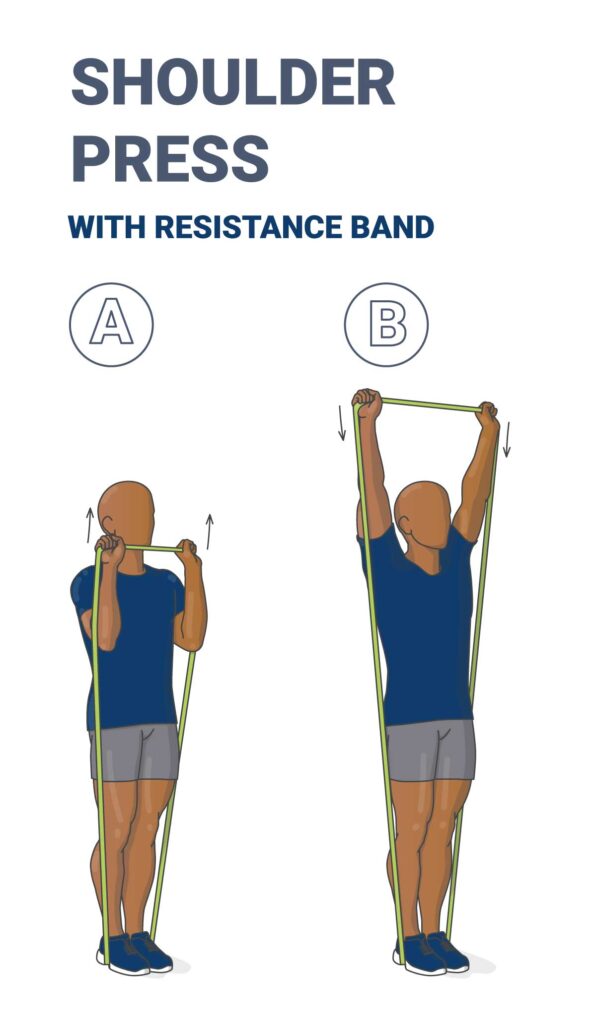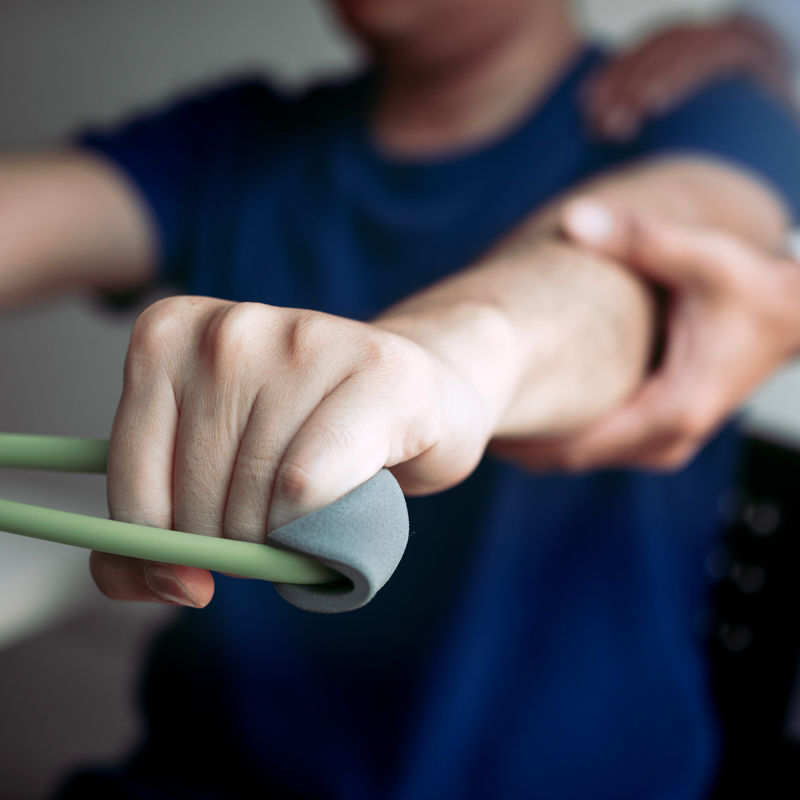Performing a few sets of shoulder presses every other day can reduce pain.
This at-home exercise is meant for stiff, achy or weak shoulders. It will stretch and strengthen the muscles and connective tissue that make up your shoulders. Doing several sets of shoulder presses per day, several days per week, will make a difference in strength and can help reduce stiffness and pain after several weeks.
This exercise is also functional — it is a movement you do every time you reach for something that is head-height or higher.
Before you begin
If you have shoulder problems, talk with your health care provider before doing this exercise. Ask your provider to demonstrate the exercise, if needed. Your orthopedist or physical therapist will explain how many repetitions you should do in each set, how many sets to do each day, and how much weight to start with.
Set yourself up for success
Perform this exercise while holding a weight in each hand. Using a pair of dumbbells is perfect, but if you don’t own any, substitute items you may have around the house. A can of tomatoes, for example, weighs nearly 1 pound. Place two cans of soup in a thick sock to create a weight of about 2 pounds. A full half-gallon jug of milk weighs a little more than 4 pounds.
An alternative to working with weights is to stand on a resistance band and grip it at shoulder width with both hands. You can buy resistance bands online or in sporting goods stores. Ask your physical therapist what level of resistance is appropriate for you to work with.
If your shoulders don’t have the range of motion to go all the way overhead: Performing this press in a slightly reclined position, such as sitting in a recliner chair, can help you perform the motion with less strain through your shoulders.
Breathe normally and use smooth movements. Stop if you feel any pain. If pain persists, call your health care provider.

How to do a shoulder press
- Hold a weight in each hand, starting with a weight that feels light to you, or stand on a resistance band and grip it with both hands. Raise your fists to shoulder level with palms facing away from you, with your elbows forward at a 45-degree angle.
- Raise both arms until they’re almost straight. Hold for one second. Lower the weights with control (don’t let your arms suddenly drop). If it is too difficult to press your arms until they’re nearly straight, try standing on the band with one foot instead of two and press your arms upward as much as possible.
- Repeat 10 to 15 times. This is one set.
- Do three sets at least every other day, if you can do them without pain.
Tips for your workout
When choosing weights and determining the number of repetitions that are right for you, remember that joints with arthritis benefit from exercise that uses low weight but many repetitions, mimicking functional movements.
Choose a weight that feels meaningful but doesn’t cause significant pain during or after the exercise. If you cannot do 10 to 15 repetitions in a row, the weight you’re using may be too heavy for you, at least to start with — or the resistance band may have a higher resistance level than you can manage at first. Try one that’s easier to stretch, or don’t use any weight at all when starting out.
If doing this exercise with both arms at the same time is too difficult, do it with one arm at a time. Be sure to do the same number of repetitions and sets with each arm.

Do your shoulders hurt?
If you’ve had an injury to your shoulder or deal with painful arthritis there, there’s help for healing and regaining function. Vanderbilt University Medical Center Physical Therapy offers personalized, one-on-one care and can help you return to your normal activities as soon as possible.




